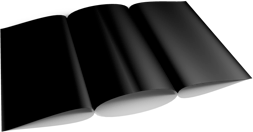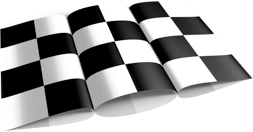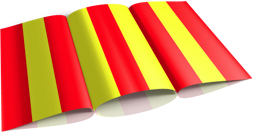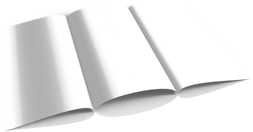A tribute to Sir Jack Brabham
So often the terms "star" or "legend" are bandied around loosely, but in Jack's case they were truely earned. He was the Formula 1 World Champion in 1959, 1960 and 1966. In partnership with his friend and fellow Aussie hero Ron Tauranac, he also won the Constructors Championship in a car bearing his own name. A feat that has never been repeated.
Jack is also responsible for lifting Australian motorsport at all levels, both by his direct actions and by being a living example of what can be achieved with grit and determination.
May you rest in peace Jack, you will be sorely missed and forever revered.
Why you need a HANS device
The difficulty is caused when a driver’s body is restrained by belts, but the violent stop causes the head to keep moving and extending the neck. This can cause a Basilar skull fracture resulting in serious injury or immediate death. This is what killed Ayrton Senna in the 1994 San Marino Formula One Grand Prix.
A HANS device is attached to the body and has straps going to the helmet that help maintain the relative position of the head.
Motor racing is dangerous and as drivers we accept that, but it is better to do everything to mitigate those risks that are easily addressed and then feel confident to go hard on the track. We owe it not just to ourselves, but to our families and the marshalls that take care of us.
Two of the leading motorsport suppliers have been generous enough to provide significant discounts to iRace competitors to make the transition easier.
Stand 21
Stand 21 can supply iRace competitors with HANS & Helmet packages using Stand 21 Club Series HANS device and posts, along with R-Jays Snell SA2010 spec helmets, for a special price as noted below. Prices are inclusive of freight.
Full Face Daytona helmet, HANS, attachment posts & freight package:$850.
Rally Open Face helmet, HANS, attachment posts & freight package: $775.
Otherwise we can supply the Club Series HANS only for $599 plus postage, if a competitor already has an Snell SA spec helmet.
Tony Dunn
Stand 21 Australia
Mobile: 0404 007 768
Fax: 02 9868 5899
Skype: tony.dunn.stand21
Web: http://www.stand21.com.au/
Email: tony@stand21.com.au
Revolution Racegear
Revolution Racegear Auburn would like to offer IRACE a bulk price on Hans devices and or helmet and Hans device packages.
Packages below:
Based on a group buy of 10 or more Hans Device Sport2 Medium or Large, Hans Post’s and sliding tethers included.
X10 or more @ $559.20 inc with Hans posts and sliding tethers.
Helmet and Hans Package:
Bell R-1 Helmet and Hans sport2 device $969 inc.
We can also offer different helmet and Hans packages if the customer is interested in a different style of helmet.
Postage is also available at a cost of $15.
This is a limited time offer while stocks last.
Dean Thomas
Revolution Racegear Sydney
(02) 9648 4044
Email: sydney@racegear.com.au
Becoming the B.E.S.T. |||amp;trade; racing driver
As soon as you become actively involved in the sport, you soon realise it is about assembling a multitude of talents and resources. For a driver who wishes to build a career, there are four key areas they need to master. If any are missed it is like a table missing legs, it will inevitably fall over.
The four areas of the B.E.S.T. ™ acronym are:
- Business
- Entertainment
- Sport
- Technology
1. Business
- Which of the four pillars are you best at?
- Are there any you avoid?
- Where are the biggest opportunities for improvement?
As you dip below the surface as a motor racing fan you recognise that every driver and team bring a different mix to the table. The competition may not always be equal or "fair", but it is always fascinating. And aren't the best times when a Senna performs a David and Goliath act by taking a Toleman and humiliating the might of the most established teams?
Racing with your Mind
Racing is a mental activity. Everything is processed through your brain. Some of it consciously, and some unconsciously. Some automatic, and some with a lot of effort. The most effective and efficient way to improve laptimes is not to spend thousands of dollars on more powerful engines or sticky tyres, it’s to spend maybe thirty dollars on a book and invest the time required to learn and practice the knowledge contained within.
That racing is a mental activity is well understood by the world’s most successful racers. Those at the top level know that having a mental edge can be the difference between winning and being mid or rear field. They spend a lot of time and money on coaches, training and psychology in order to win. You can tap into this too, and for a tiny fraction of what the top guys spend.
There are a handful of racers willing to write down all the things that they have spent countless hours and dollars learning in order to win. Many of you will already have at least one Carroll Smith book. Most of you will have learned about ‘Think Fast’ by Neil Roberts from us last year. Now we’ve teamed up with Jon Newell to get the word out about another fantastic opportunity.
Speed Secrets by Ross Bentley is an awesome series of books sharing many of the secrets he learned while racing CART Indycars, and winning the Daytona 24 hour race, and even more that he has learned since in his quest to figure out what separates the winners from the also-rans. Ross Bentley has combined all the most useful parts of his earlier books into one essential volume - Ultimate Speed Secrets.
www.speedsecrets.com.au are giving away a copy of Ultimate Speed Secrets at each round of the 2012 Independent Race Series. The book will be awarded to the driver judged to be considered ‘most promising’ at each round. The book went to Peter Robinson at Round 1. If you want to know all the secrets now (and you should), you can buy a copy here, and it’s also available as a Kindle eBook here.
And if you really want to take it to the next level, head over to speedsecrets.com.au and sign up to their mailing list to receive all the information about the Ultimate Speed Secrets seminars that Jon Newell is collaborating with Ross Bentley and iRace to organize for 2013. You can also get information on Ross Bentley's terrific iPhone Driver Coach app.
Handicap Racing
At iRace we work hard to promote hard, fair racing. We want the drivers in our series to develop, and to gain the maximum benefit from racing with us. We've evolved a variety of different race formats, including rolling starts, reverse grid races, and perhaps the most beneficial of all, the handicap race format.
The handicap race format allows cars and drivers of all different speeds to race together, and for everyone to have a chance of winning. The basic concept is that the slowest cars start first, with faster cars released in groups at calculated time intervals. In Acuform Muscle Division and K-Mac Touring Car Challenge, we spend a lot of time trying to perfect the groupings, and the time delay. We work out the delay based on the average laptime for each group (taking the fastest time for each member of the group and then averaging from there), and such that the groups should all come together at around 80 percent race distance. This leaves the remaining 20 percent of the race for overtaking. For example in a 10 lap race, we'll try to get everyone to merge on lap 8, with laps 9 and 10 where all the action happens, and the final race result is decided. Occasionally things work out perfectly, and we'll have the whole field covered by 10 or 20 seconds as they greet the chequered flag.
How can drivers maximise their chance of winning? Consistency. If you are able to put in the same laptimes lap after lap, you'll give yourself the best chance of being at the front at the finish. Spin, make a mistake, or lose time on the odd lap trying to hard, and you'll struggle to either: a) hold onto the lead you have (if you started at the head of the field), or b) make up ground on the slower cars ahead. Consistency is the key.
Some other top tips include: try not to lose time being overtaken, the best option is to brake a little early and let a faster car by - this will lose you the least amount of time (unless it's the last lap and you have a chance of keeping the lead!), if you are chasing, be patient - it's tempting to go hell for leather trying to catch the cars you can see so far ahead, but try to pace yourself, drive your markers, and put in smooth consistent laps (pushing too hard risks making mistakes and losing time). If you are out front early, just put your head down and go, go, go.
When you get it right, and handicap race can be the most fun you'll ever have in a racecar. It offers racecraft, strategy, overtaking, being overtaken, and best of all, a thrilling finish.
We were able to put together the following video, showing the perspective of cars at either end of the field as they make their way through a handicap race. Enjoy!
The Art of Overtaking
Overtaking is a tricky business. It’s part of motorsport, and one of the most exciting aspects. With the diverse range of cars in the Independent Race Series we see even more overtaking than most other circuit racing.
Done poorly, overtaking can cause unnecessary delays for both cars, and in the worst case damage and DNFs (think Vettel and Webber at Turkey last year). Done properly, and with respect, overtaking can be safe, efficient and exciting (think Webber and Hamilton carving through the field at China this year).
The aim of any overtaking manoeuvre is for the overtaking car to safely pass the car in front, and for both cars to continue on. Our previous feature article looked at how to avoid contact in general, click here for a refresher. Building on that information, let's have a look at some of the complications of overtaking.
For the overtaker:
- The car to be overtaken is in your sights for a long (relatively) period of time - your attention is out the front of your car, so you see the car ahead for a significant period of time. This can lead to a failure to appreciate that the car you are approaching does not have the same awareness of your presence as you do of his.
- You may be behind the car for long enough to see a sense of his rhythm. If the car ahead deviates from the normal rhythm you have observed, you may misinterpret this as him either giving way to you, or a small lose that you can take advantage of. This can cause problems if it was simply a small error or missed gear, wires can get crossed, and contact can occur.
- Frustration may set in, and you may start to get impatient.
For the overtaken:
- Your attention is naturally on the road ahead. Nobody drives fast by looking in the rear view mirror. A faster car may suddenly appear in your mirror (if you check it), or alongside you. In your eyes he came from nowhere, but in his eyes he was watching you for some time.
How to be passed
There is a right way and a wrong way to be passed, or perhaps better phrased as a fast way and a slow way. The wrong way is to position yourself such that the only way for the faster car to get through results in contact, or at the very least in both of you going off line and losing time. The right way involves either being passed on a straight, or on the approach to a corner. If the overtaking car is faster in a straight line, the pass on the straight is simple. To allow a faster car through on the approach to a corner, simply brake a little earlier, or for a little longer, while holding the normal line. This will allow the overtaking car through on the inside, and the instant he is past, you can release the braking pressure and take up the normal line an inch from his tail (watchout for cars following closely behind the overtaking car!) - you lose VERY little time by using this method, and reduce the likelihood of contact.
Last Word
The last word on this topic comes from the fantastic book "Think Fast" by Neil Roberts:
- It is your responsibility to see and avoid everything, everywhere, all the time.
- The car in front of you owns the entire width of the track, even if you are alongside, and even if you are about to lap that car. The car in front of you has the right to use any and all of the track, the curbs, and the grass, so any contact is your fault. The instant that the nose of your car edges ahead of the nose of the other car by one micron, the roles reverse. Now you own the entire width of the track, and you can drive anywhere you want.
- The way that you deal with nearby cars reveals how much you can be trusted.
Contact!
Driving race cars on the limit is a challenging activity. Add in variable track and weather conditions, plus other cars sharing the same piece of road, and it becomes a constantly changing and formidable task. Most of the time we get it right, and everyone is able to keep to their own piece of the track. Occasionally though, cars come in contact.
Contact between cars is obviously undesirable, and something that is not taken lightly by officials. There are some simple things to keep in mind though to help keep you out of strife, and ensure you're operating in the spirit of the Independent Race Series and maintaining harmony with your fellow competitors and respective their and your own investment.
Avoid contact in the first place
Seems pretty obvious, and the most effective way to do this is never to overtake anyone - obviously that is not a workable solution (nor one that we would encourage), so a better approach is needed.
Know your fellow competitors. You can start working on this before you even line up on the grid for a race. Other drivers racing line, braking points and on track demeanour will certainly be subtly different to your own. You can observe these things in practice and qualifying sessions, and you should work to build a mental database of what to expect from your competitors when you encounter them on track. Knowing what to expect from them will mean you are prepared if you see the other guy brake a little earlier, or turn in a little later. It will help you be ready for it, take advantage of it, and avoid contact.
Know the track. When you are practicing, as well as just learning the fastest way around a circuit, look for good, effective overtaking places. Generally you'll be looking for somewhere you can get a better run out of the preceding corner or a tow on the straight, to set yourself up in a favorable position approaching the braking zone. A long braking zone is good, and you'll also want a section where you can make the pass stick (where you can exit the corner firmly in the lead and pull a small gap on the next section). Sections like this are rare, so sometimes you need to look for the best compromise and file it away as one of your preferred overtaking places.
Know your car. The most important part of this is knowing your cars strengths relative to the competition. Is it lighter and nimbler? Or more powerful and stable? This will help you know where the best place to pass might be.
Know your limitations. If you consider all of the above, and know your own limitations: how late you can brake, how fast you can take each corner, how tight you can hold your line and so on, you should be able to successfully overtake without making contact.
Know when to back out. Sometimes you can line the perfect pass up, but the other guy doesn't see you, or is baulked by something out of your control - be on the lookout for this, and know when to play it safe and try the pass on the next lap, or on another corner.
If you make contact, apologise
The person you have made contact with may not always be in the most receptive mood, depending on the outcome (but hopefully you've applied most of the principles above, and the consequence of the contact was minor), but generally the sooner you can apologise, the more it means. If you gained an advantage on the circuit as a result of the contact, and you can redress the situation, do it as soon as you can - don't slam your brakes on in front of the other car, but blend out of the way and allow him back past (a good example of this can be seen here, where Daniel Flanagan inadvertently contacts Tony Grant and slows a couple of corners later to allow him back past).
If you have the chance to redress things during the race or not, you should always make the effort to apologise to the other driver in person.
Never make deliberate contact
Deliberate contact will not be tolerated in the Independent Race Series, you may receive anything from a warning to a complete ban from the series.
The role of the driver being overtaken
No racer likes to be overtaken, but there are a few things to keep in mind to minimize the likelihood of contact. Be aware of all the considerations mentioned above. Know what is going on around you - checking your mirrors will let you know if a car is gaining, the rate of closure should give you an idea if you should expect a move at the next corner. You're generally within your rights to defend your line, but you should not change your line once the other car has achieved an overlap. If you see another car going for a move that will clearly never work, sometimes it's best to just move aside for a moment and allow that car to go off on their own (rather than taking you with them).
Final thoughts
Racing is a tricky business. Racecars are expensive. Contact is something we should do our best to avoid, and if the worst does happen, apologise and endeavor to redress any advantage it may have gained you.
Most of all, remember these iRace principles:
We care about safety
We care about each other
Flagging Attention
From time to time Race Control need to communicate directly with a driver or drivers. And the only way to do this is via flag signals. It's important that everyone knows exactly what each flag means, so the messages that are passed aren't misunderstood or ignored.
Below is a short refresher on what each flag means. This information can also be found in the iRace Series Rules & Regulations.
Black Flag
Driver Action:
Enter the pitlane on the next lap
Reason for Use:
Shown when there has been an infringement or other problem
Black and White Diagonal Flag
Driver Action:
Correct driving behaviour or standards
Reason for Use:
Warning flag shown when driver is behaving in an unsportsmanlike manner
Chequered Flag
Driver Action:
Cease racing and return to pits or paddock
Reason for Use:
Marks the completion of the race or session
Blue Flag
Driver Action:
Check mirrors and prepare to be overtaken
Reason for Use:
Usually waved when a faster car is approaching or attempting to overtake a lapped car
Green Flag
Driver Action:
Resume racing
Reason for Use:
All clear ahead (usually after an incident zone)
Black with Orange Disc Flag (Meatball)
Driver Action:
Stop at pit on the next lap
Reason for Use:
Vehicle has a mechanical problem which may cause a safety hazard
Red Flag
Driver Action:
Stop racing, return to the grid or pitlane (as directed), be prepared to stop at any point, NO OVERTAKING
Reason for Use:
The race or session must be stopped for safety reasons, usually an on-track incident
Red and Yellow Striped Flag
Driver Action:
Use caution the racing surface is degraded or slippery
Reason for Use:
The circuit is breaking up, or oil/coolant or debris on surface
White Flag
Driver Action:
Use caution, slow moving vehicle on the circuit
Reason for Use:
Slow moving racecar or service vehicle on the circuit
Yellow Flag
Driver Action:
Slow, use caution, be prepared to stop or take avoiding action, NO OVERTAKING
Reason for Use:
An incident or obstruction on the circuit. Waved if partial blockage of the track, double-waved if significant blockage
Featured Product Wrap Up
 We've been slowly adding some articles to the Featured Product page, and have some great reviews and tutorials now available:
We've been slowly adding some articles to the Featured Product page, and have some great reviews and tutorials now available:- VIO POV1.5 Helmet/Onboard Camera Review
- VHoldR ContourHD Helmet/Onboard Camera Review
- Editing Your Onboard Footage with Quicktime Pro
Head over and have a read, and if there is a product you would like to see reviewed, please get in touch by clicking here.
Roll On: How an Anti Roll Bar Works
There are some technical explanations missing from this article. This is deliberate. We want to keep things as simple as possible, focussing mostly on what anti roll bar change to make to achieve the right result. For more in depth coverage of this topic, you might like to refer to Allan Staniforth's excellent book: Competition Car Suspension.
What does an Anti Roll Bar do?
Resists Roll
The anti roll bar (as is implicit in the name), resists roll. As a racecar drives through a corner, the anti roll bar works to resist compression in the outside suspension, and also works to resist extension in the inside suspension.
Increases Spring Rate
The anti roll bar increases the effective spring rate in the outside suspension when the car is going through a corner.
Transfers Weight
In a cornering situation, the anti roll bar works to transfer weight from the inside tyre to the outside tyre. If anti roll bars are fitted front and rear, the relative strength of the anti roll bars at each end will also work to transfer weight from front to rear or vice versa.
What does all this mean?
Resisting roll is generally a good thing. It maintains the racecar in a relatively stable platform. For an aero sensitive car, it will also keep the wings working at or near their optimum. Most cars also experience some camber change as the suspension moves through it's travel. Any change in camber from optimum means less of the tyre is in contact with the track - this means less grip. The roll resistance provided by an anti roll bar can help reduce this by keeping the tyre closer to optimum camber.
Increasing spring rate leads us into how we use the anti roll bar to tune the suspension. The static spring rate at each end of the car is normally selected to keep the tyre in contact with the track surface as much as possible. Too soft, and the suspension will deflect to the point where the bodywork/floor contacts the ground, or the suspension reaches the end of its travel. Too hard, and the tyre will spend most of its time skipping across the surface. If we go to the extreme, to solid suspension, the tyre will quickly become overloaded and skate through every corner. So, if we assume that the spring rate is already at optimum, an increase will result in some reduction of grip.
Weight transfer means that more of the cars total weight is carried by one wheel than the other. If we imagine a car that, when parked, has equal weight on every corner (say 250kg), all tyres will provide the same amount of grip. As this imaginary car enters a left hand corner, some of the weight is transferred to the outside tyres (the exact amount will depend on roll centre heights and other things beyond the scope of this article). If the anti roll bars front and rear are the same, the weight transfer at the front and rear will be the same. We now have 300kg on the right hand tyres, and 200kg on the left hand tyres. If we were to simplify things, we would assume that this means we now have 20% of our grip coming from each inside tyre, and 30% from each outside tyre - this is not accurate, the relationship between tyre load and resultant grip is not linear. The actual figures may be something more like: 15% from each inside tyre, and 35% from each outside tyre. If we stiffen the front anti roll bar (but leave the rear the same, the result may be something like: LF 180kg, RF 320kg, LR 200kg, RR 300kg. Because the load/grip curve is not linear, the amount of grip at each tyre will be something like: LF 10%, RF 38%, LR 15%, RR 37%. If we then compare total front grip to total rear grip, we see there is 48% at the front, and 52% at the rear. Stiffening the front anti roll bar has given us a higher proportion of grip at the rear. The car is now more likely to understeer.
Putting it into practice
There are a number of ways to remember what effect an anti roll bar change will have.
You may like to think of it as putting a stiffer anti roll bar at one end of the car, will 'tie-down' the opposite end, ie; a stiffer bar in the front will yield more rear grip.
Or you may consider that the anti roll bar reduces compliance at the end it is used, and reduces grip at that end of the car.
Both of these explanations overly simplify what is actually happening, but they do help to remember which way to make changes when adjusting setup at the circuit.
Essentially, to reduce understeer, you may try using a stiffer rear anti roll bar (trade offs will be reduced rear grip, worse power down for RWD cars), or a softer front anti roll bar may be more appropriate.
To reduce oversteer, go for a stiffer front anti roll bar, or soften the rear anti roll bar.
Further Reading
- Competition Car Suspension by Allan Staniforth
- Drive to Win by Carroll Smith
- Tune to Win by Carroll Smith
- How to Make Your Car Handle by Fred Puhn
- Race Car Engineering & Mechanics by Paul Van Valkenburgh
Disclaimer:
Remember, you are responsible for the consequences of any changes you make, and any adverse outcomes. This article is provided for reference only. Neither iRace or the author offer any warranty or any liability for any damage or injury caused by tweaking any racecar.















